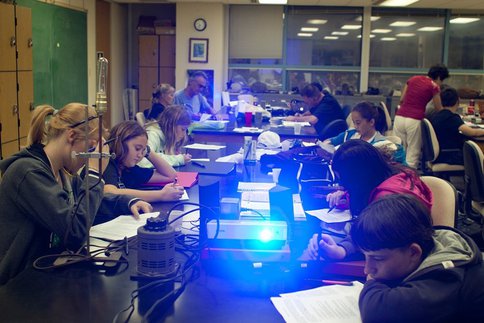2012 Annual Science Report
 University of Hawaii, Manoa
Reporting | SEP 2011 – AUG 2012
University of Hawaii, Manoa
Reporting | SEP 2011 – AUG 2012
EPO Activity: HI-STAR K-12 Outreach Program
Project Progress
This program is to mentor middle school students and teachers in astronomy-related astrobiology projects which lead to science fair participation. The program was held from May 30-June 4, 2012. Twenty students, ages 12-17, participated in the program with 35% qualifying for the $150 registration fee waivers. 85% attend public schools, 50% were from the other islands of Hawaii and 10% were from California, one of whom had the fee waiver. 30% were returnees. They lived in the UH dormitories with a graduate student and 3 teacher counselors. The HI STAR staff and other scientists gave lectures on astrobiology, Main Belt Comets, exoplanets, solar system origin and basic physics. The students also honed their skills in image processing and communicating their research findings plus learning how to work in teams. They did remote observing with the 2 meter Faulkes Telescope North in Haleakala, Maui and the 16 inch telescope at DeKalb Observatory in Indiana. 7 scientist-mentors worked with these students on research projects on comets, Near Earth asteroids, double stars, galaxies, quasars, exoplanets and the sun. Images from Faulkes Telescope images, from Galaxy Zoo and other telescopes such as Gemini were used for these projects. Group presentations were given. The students continue to work on astronomy projects as follow up by HI STAR staff and mentors is being done. They are encouraged to complete their projects so these can be entered in 2013 School, District, and Hawaii State Science Fair, beginning as early as Jan, 2013. We anticipate having at least one project advancing to the 2013 Intel International Science and Engineering Fair. Note: 1. 2011 HI STAR students entered 6 projects at the 2012 Hawaii State Science Fair and 2 advanced to the 2012 Intel International Science and Engineering Fair. 2. One project on Main Belt Comets conducted by a HI STAR middle school female student received the national Broad Master award sponsored by Google.
A group of K-12 participants learn how astronomers gather detailed information, such as the composition of distant atmospheres, through the emission and absorption of light.
